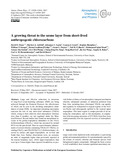JavaScript is disabled for your browser. Some features of this site may not work without it.
| dc.contributor.author | Oram, David E. | |
| dc.contributor.author | Ashfold, Matthew J. | |
| dc.contributor.author | Laube, Johannes C. | |
| dc.contributor.author | Gooch, Lauren J. | |
| dc.contributor.author | Humphrey, Stephen | |
| dc.contributor.author | Sturges, William T. | |
| dc.contributor.author | Leedham-Elvidge, Emma | |
| dc.contributor.author | Forster, Grant L. | |
| dc.contributor.author | Harris, Neil R. P. | |
| dc.contributor.author | Iqbal Mead, Mohammed | |
| dc.contributor.author | Samah, Azizan Abu | |
| dc.contributor.author | Phang, Siew-Moi | |
| dc.contributor.author | Ou-Yang, Chang-Feng | |
| dc.contributor.author | Lin, Neng-Huei | |
| dc.contributor.author | Wang, Jia-Lin | |
| dc.contributor.author | Baker, Angela K. | |
| dc.contributor.author | Brenninkmeijer, Carl A. M. | |
| dc.contributor.author | Sherry, David | |
| dc.date.accessioned | 2017-11-07T15:05:21Z | |
| dc.date.available | 2017-11-07T15:05:21Z | |
| dc.date.issued | 2017-10-12 | |
| dc.identifier.citation | Oram DE, Ashfold MJ, Laube JC, et al., (2017) A growing threat to the ozone layer from short-lived anthropogenic chlorocarbons. Atmospheric Chemistry and Physics, Volume 17, October 2017, 11929-11941 | en_UK |
| dc.identifier.issn | 1680-7316 | |
| dc.identifier.uri | http://dx.doi.org/10.5194/acp-17-11929-2017 | |
| dc.identifier.uri | http://dspace.lib.cranfield.ac.uk/handle/1826/12703 | |
| dc.description.abstract | Large and effective reductions in emissions of long-lived ozone-depleting substance (ODS) are being achieved through the Montreal Protocol, the effectiveness of which can be seen in the declining atmospheric abundances of many ODSs. An important remaining uncertainty concerns the role of very short-lived substances (VSLSs) which, owing to their relatively short atmospheric lifetimes (less than 6 months), are not regulated under the Montreal Protocol. Recent studies have found an unexplained increase in the global tropospheric abundance of one VSLS, dichloromethane (CH2Cl2), which has increased by around 60% over the past decade. Here we report dramatic enhancements of several chlorine-containing VSLSs (Cl-VSLSs), including CH2Cl2 and CH2ClCH2Cl (1,2-dichloroethane), observed in surface and upper-tropospheric air in East and South East Asia. Surface observations were, on occasion, an order of magnitude higher than previously reported in the marine boundary layer, whilst upper-tropospheric data were up to 3 times higher than expected. In addition, we pro-vide further evidence of an atmospheric transport mechanism whereby substantial amounts of industrial pollution from East Asia, including these chlorinated VSLSs, can rapidly, and regularly, be transported to tropical regions of the western Pacific and subsequently uplifted to the tropical upper troposphere. This latter region is a major provider of air entering the stratosphere, and so this mechanism, in conjunction with increasing emissions of Cl-VSLSs from East Asia, could potentially slow the expected recovery of stratospheric ozone. | en_UK |
| dc.language.iso | en | en_UK |
| dc.publisher | European Geosciences Union (EGU) / Copernicus Publications | en_UK |
| dc.rights | Attribution 3.0 Unported | |
| dc.rights | https://creativecommons.org/licenses/by/3.0/ | |
| dc.title | A growing threat to the ozone layer from short-lived anthropogenic chlorocarbons | en_UK |
| dc.type | Article | en_UK |
| dc.identifier.cris | 18813397 |
Files in this item
This item appears in the following Collection(s)
-
Staff publications (SWEE) [2827]
